Create an image of a family having fun playing board games together in their living room during a rainy day. There are colorful game pieces and dice scattered on the table, while the parents and kids are all smiling and laughing as they take turns rolling the dice. In the background, raindrops can be seen hitting against the window pane:
Key Takeaways:
- Indoor activities are essential for keeping kids entertained and stimulated.
- Creative ideas and games can provide fun and educational experiences.
- Riddles, arts and crafts, and making movies are engaging options.
- Building a Rube Goldberg machine and hosting a comedy show promote critical thinking and self-confidence.
- Screen time, board games, and sensory play can also be enjoyable indoor activities.

Tell Riddles
Engaging in the activity of telling and solving riddles can be a fun and educational way to stimulate children's minds. Riddles for kids not only provide entertainment but also help develop logic and critical thinking skills. By challenging themselves and others with riddles, children learn to think creatively and analytically, honing their problem-solving abilities.
To get started, children can use riddle books or online resources to find a variety of riddles suitable for their age group. They can also exercise their memory by memorizing a few riddles and sharing them with friends and family. Encouraging children to invent their own riddles is another creative outlet that nurtures their imagination and linguistic skills.
Examples of Riddles:
- What has keys but can't open locks? (A piano)
- I am taken from a mine and shut in a wooden case, from which I am never released, and yet I am used by almost every person. What am I? (A pencil)
- What has an eye but cannot see? (A needle)
- I speak without a mouth and hear without ears. I have no body, but I come alive with the wind. What am I? (An echo)
Telling riddles not only provides entertainment, but it also promotes bonding and social interaction among children and their peers. It's a wonderful way to engage children's critical thinking skills while having fun!
Host Arts and Crafts Hour
Engaging children in arts and crafts activities at home is a fantastic way to spark their creativity and keep them entertained for hours. Whether it's a rainy day or a lazy weekend, hosting an arts and crafts hour allows kids to explore their artistic abilities and create DIY masterpieces.
With just a few simple materials like ribbons, craft sticks, and pipe cleaners, children can let their imaginations run wild. They can design and craft unique creations that reflect their personality and style. From homemade jewelry to 3D sculptures, the possibilities are endless when it comes to arts and crafts.
To add an extra touch of fun, children can showcase their artwork by creating an at-home museum experience. Using clothespins and baker's twine, they can create a gallery-style display to exhibit their creations. This not only allows them to feel proud of their work but also provides an opportunity for the whole family to appreciate and celebrate their artistic talents.
Enhancing Creativity and Fine-Motor Skills
- Arts and crafts activities support the development of fine-motor skills as children manipulate and control various materials.
- Children can express their creativity through the use of color, texture, and design, fostering their imagination and artistic abilities.
- Engaging in arts and crafts allows children to explore different art techniques and styles, expanding their knowledge and appreciation of various art forms.
Creating Lasting Memories
- Children can create personalized and meaningful artwork that serves as a memento of their childhood.
- Engaging in arts and crafts as a family activity offers an opportunity for bonding and creating lasting memories together.
- Parents can preserve their children's artwork by displaying or storing it, allowing them to cherish these precious pieces in the future.
Make a Movie
Engaging in filmmaking can be an exciting and hands-on experience for kids. Not only does it offer a creative outlet, but it also allows them to explore the world of special effects and stop-motion animation. Whether using a smartphone or a camera, children can dive into the process of scriptwriting, planning shots and scenes, and making props.
Filmmaking for Kids
With filmmaking, children can develop valuable skills such as storytelling, problem-solving, and teamwork. They can experiment with different camera angles, lighting techniques, and sound effects to enhance their movies. In addition to traditional filming, they can also try their hand at stop-motion animation using tools like Stickbots or the Hue Animation Studio. This form of animation involves taking a series of pictures and then playing them back in sequence, creating the illusion of movement.
- Hands-on experience with scriptwriting and filmmaking techniques
- Opportunity for creativity and experimentation
- Exploration of special effects and stop-motion animation
- Development of storytelling, problem-solving, and teamwork skills
By engaging in the process of making a movie, children not only have fun but also gain a deeper appreciation for the art of filmmaking. They can share their creations with friends and family, fostering a sense of pride and accomplishment. So why not grab a camera and let their imaginations run wild as they bring their stories to life on the big screen?
Have a Paper Airplane Competition
In the age of digital devices, a simple and classic activity like flying paper airplanes can provide endless entertainment for children. Not only is it a fun way to spend time indoors, but it also helps develop their motor skills and creativity. So, gather some paper, fold it into airplanes, and let the competition begin!
Here are some ideas to make your paper airplane competition even more exciting:
- Create different categories: Have categories for longest flight, most loops, and most accurate landing. This way, children can explore the different aspects of paper airplane flying and compete in multiple challenges.
- Experiment with folding techniques: Encourage children to try out different folding techniques to see how it affects the trajectory and flight of their airplanes. By experimenting and making adjustments, they can learn about the principles of aerodynamics.
- Add targets for precision: Cut out targets from leftover shipping boxes and set them up around the room. Children can try to land their paper airplanes as close to the targets as possible, testing their aim and precision.
- Hold a championship: If you have multiple participants, consider hosting a championship with multiple rounds. The winners from each category can compete against each other, building up excitement and friendly competition.
Remember, the goal is to have fun and enjoy the process of creating and flying paper airplanes. Encourage children to share their knowledge, learn from each other, and celebrate their accomplishments. Happy flying!
Make a Scrapbook
Creating a scrapbook is a wonderful way for children to preserve their cherished memories and create a beautiful keepsake that they can treasure for years to come. With a scrapbook, kids can take a trip down memory lane by gathering photographs, ticket stubs, drawings, and other mementos that hold special meaning to them.
They can arrange these items in a decorative and personalized way, using stickers, colourful drawings, and even quotes that capture the essence of the memories. With each page turn, they can relive their special moments and share them with friends and family. By engaging in this creative activity, children not only strengthen their fine motor skills but also ignite their imagination and storytelling abilities.
How to Create a Scrapbook:
- Gather materials such as a scrapbook album, adhesive, scissors, colored pencils or markers, and various decorative elements like stickers, ribbons, or washi tape.
- Select the photos and mementos you want to include in your scrapbook. Consider organizing them by theme or chronological order.
- Arrange the items on each page before adhering them with adhesive. Get creative with different layouts, such as collages or borders.
- Add decorative elements like stickers, drawings, or quotes to enhance the visual appeal of your pages.
- Take your time and enjoy the process of creating your scrapbook. It's a chance to reflect on fond memories and express your creativity.
Scrapbooking sets specifically designed for tweens and teens can provide additional creative options and inspiration. These sets often include themed stickers, patterned paper, and embellishments that can make the scrapbooking experience even more enjoyable.
So, encourage your child to embark on a scrapbooking journey and create a beautiful memory book filled with treasured photographs, stickers, drawings, and mementos. This creative activity will not only bring them joy and a sense of accomplishment but also provide them with a tangible reminder of the special moments in their lives.
Make Homemade Modeling Dough
Playing with modeling dough is not only a fun and enjoyable activity for children, but it also offers various benefits for their development. By engaging in this hands-on play, children can enhance their hand strength and improve fine-motor coordination. Making homemade modeling dough adds an extra element of creativity and allows parents to ensure the ingredients used are safe and non-toxic.
Making homemade modeling dough is a simple and rewarding activity that children can participate in. Here is a quick and easy recipe to create your own modeling dough at home:
- Mix together 2 cups of all-purpose flour, 1 cup of salt, and 2 tablespoons of cream of tartar in a bowl.
- In a separate pot, heat 1.5 cups of water and 2 tablespoons of vegetable oil over medium heat until warm.
- Add the wet ingredients to the dry ingredients and stir until a dough begins to form.
- Transfer the dough onto a clean surface and knead it until it becomes smooth and pliable.
- Divide the dough into smaller portions and add food coloring or scented extracts of your choice to create different colors and scents.
- Store the modeling dough in airtight containers to keep it fresh for future play sessions.
Once the modeling dough is ready, children can use their imagination to mold it into various shapes and objects. They can create animals, flowers, or even their favorite characters. This activity not only stimulates their creativity but also allows them to explore different textures and engage in sensory play.
By encouraging children to play with modeling dough, parents can provide a fun and educational experience that promotes their fine-motor skills, hand-eye coordination, and imaginative thinking.

Do a Room Makeover
Is your child's room in need of a fresh and exciting new look? A room makeover can be a fun and creative project that allows children to express their individuality and make their space truly their own. Whether it's a new paint color, furniture rearrangement, or adding wall decorations, there are endless possibilities to transform their room into a cozy and personalized sanctuary.
One way to start the room makeover is by choosing a new paint color. Encourage your child to pick a shade that reflects their personality and creates the ambiance they desire. A vibrant accent wall or a soothing pastel shade can instantly change the mood of the room.
Another exciting aspect of a room makeover is rearranging furniture. This can open up new possibilities for the layout and functionality of the space. Experiment with different arrangements to find the best setup that maximizes comfort and enhances the overall aesthetic. You might be surprised at the refreshing transformation a simple furniture rearrangement can bring.
Wall decorations add the finishing touch to any room makeover.
Finally, wall decorations add the finishing touch to any room makeover. Consider hanging posters, artwork, or photographs that align with your child's interests and passions. You can also try using removable wall decals or stickers to add a touch of creativity and personalization.
A room makeover is not only a fun project but also a way for children to take ownership of their personal space. It allows them to express their creativity, personality, and individuality. So, get ready to unleash your child's imagination and transform their room into a space they'll love spending time in.
Build a Rube Goldberg Machine
Building a Rube Goldberg machine is an exciting and engaging activity that allows children to develop their STEM skills. The concept involves creating a complex machine that performs a series of tasks through a chain reaction. It encourages creative problem-solving, critical thinking, and experimentation. Children can use a variety of construction toys such as dominoes, marbles, and LEGO bricks to construct their own unique Rube Goldberg machine.
This hands-on project provides children with the opportunity to explore cause and effect relationships and understand the principles of physics and engineering. They can experiment with different designs, mechanisms, and materials to achieve their desired results. As they troubleshoot and refine their machine, they'll develop resilience and perseverance in the face of challenges. Building a Rube Goldberg machine can be a fun and educational activity for both children and parents to enjoy together.
Benefits of Building a Rube Goldberg Machine:
- Develops STEM skills
- Promotes creative problem-solving
- Encourages critical thinking
- Teaches cause and effect relationships
- Enhances understanding of physics and engineering principles
- Fosters resilience and perseverance
Engaging in the construction of a Rube Goldberg machine provides a hands-on learning experience that sparks curiosity and imagination. It allows children to apply their knowledge of science and engineering in a practical and exciting way, fostering a love for STEM subjects. So, gather your construction toys, get creative, and embark on the journey of building your very own Rube Goldberg machine!
Host a Comedy Show
Hosting a comedy show at home is a fun and entertaining activity that can help children develop essential skills such as public-speaking, self-confidence, and joke writing. It's a great way to encourage creativity and laughter within the family.
Joke Writing
Working together with their family, children can write their own jokes and create a repertoire of funny and engaging material. This not only stimulates their imagination but also helps improve their writing and communication skills. They can experiment with different types of jokes, such as puns, one-liners, or riddles, and practice delivering them with the right timing and tone.
Public-Speaking Skills
Hosting a comedy show provides an opportunity for children to practice their public-speaking skills. They can learn to project their voice, maintain eye contact with the audience, and use gestures and body language to enhance their performance. This activity boosts their self-confidence and develops their ability to engage and entertain a crowd.
Family Fun
Hosting a comedy show is a fantastic way to bring the whole family together for a night of laughter and enjoyment. Parents and siblings can join in the fun by supporting and encouraging the young comedians. It creates a bonding experience and strengthens family connections.
So, gather your family for a memorable evening of laughter and entertainment with your very own comedy show. It's a fantastic opportunity for children to hone their public-speaking skills, boost their self-confidence, and share laughter with their loved ones.
FAQ: Indoor Play
There are plenty of fun indoor activities to keep kids entertained and stimulated. Some ideas include telling and solving riddles, engaging in arts and crafts activities, creating movies, folding and flying paper airplanes, making scrapbooks, playing with modeling dough, giving a room a makeover, building a Rube Goldberg machine, hosting a comedy show, doing hands-on learning activities, starting an indoor garden, watching movies and TV shows, playing board games, and making sensory bins.
Engaging in riddle activities can help develop critical thinking skills, logical reasoning, and creativity in children. They can challenge themselves and others by solving riddles from books, using memory, or by inventing their own riddles.
Children can use materials like ribbons, craft sticks, and pipe cleaners to create DIY masterpieces. They can also showcase their artwork by creating an at-home museum experience using clothespins and baker's twine.
Children can create their own movies using smartphones or cameras. They can develop skills in scriptwriting, planning shots and scenes, making props, and experimenting with special effects. Alternatively, they can try their hand at stop-motion animation using tools like Stickbots or the Hue Animation Studio.
Folding and flying paper airplanes can be a fun and educational activity for kids. They can experiment with different folding techniques to see how it affects the trajectory and flight of the airplanes. They can also use leftover shipping boxes as targets for their paper airplanes.
Children and their families can gather photographs, ticket stubs, handouts, and other mementos to arrange in a decorative way using stickers, drawings, and quotes. Scrapbooking sets geared towards tweens and teens can provide additional creative options.
Playing with modeling dough offers various benefits for children, including developing hand strength and improving fine-motor coordination. Children can take the experience one step further by making the dough themselves using a simple recipe, engaging in sensory play, and allowing parents to monitor the ingredients used.
Children can give their room a makeover by choosing a new paint color, rearranging furniture, or adding new decorations to change the look and feel of their space. This allows them to express their individuality and create a cozy and personalized atmosphere.
Building a Rube Goldberg machine is a fun way for children to develop their STEM skills. They can use dominoes, marbles, LEGO bricks, and other construction toys to create a machine that performs a series of tasks. This activity helps them learn about cause and effect, creative problem-solving, and critical thinking.
Hosting a family comedy show offers children the opportunity to work on public-speaking skills, including timing, clear speech, and self-confidence. They can work together with their family to write and perform jokes. Books like "LOL 101" can provide guidance on joke writing and delivery.
There are various hands-on learning activities that children can engage in at home. These activities can involve reading, math, social studies, or STEM concepts. They are designed to make learning fun through interactive projects and materials that can be found around the house.
Starting an indoor garden is a great way for children to learn about plants and gardening. They can use empty planters or repurpose materials like egg cartons to grow their own plants. Keeping track of the garden's progress and using the plants in cooking projects adds an extra element of excitement and engagement.
While screen time should be limited, movies and TV shows can be a source of entertainment and family bonding. Choosing age-appropriate and educational films and programs can make screen time more enriching and enjoyable for children.
Playing board games is a classic and screen-free activity that can bring the family together. It provides an opportunity for quality time, friendly competition, and the development of social skills and problem-solving abilities.
Setting up a sensory bin filled with rice and other sensory materials can provide hours of entertainment for young children. They can explore and manipulate the materials, developing fine motor skills, sensory awareness, and imaginative play.
Do a Learning Activity
Engaging in hands-on learning activities at home can be both educational and entertaining for children. These activities provide a practical way for kids to apply and reinforce concepts they've learned in school, while also sparking their curiosity and creativity. Here are some ideas for hands-on learning activities that cover a range of subjects:
1. Reading:
- Create a reading nook: Set up a cozy corner with pillows, blankets, and shelves filled with books. Encourage your child to choose books that interest them and spend time reading every day.
- Act out a story: Select a favorite book and have your child act out scenes or create their own ending. This helps them develop reading comprehension and storytelling skills.
2. Math:
- Baking project: Involve your child in measuring ingredients, doubling or halving recipes, and calculating cooking times. This hands-on approach to math makes learning fun and practical.
- Math games: Play math-focused games like Sudoku, Tangrams, or card games that involve counting and strategic thinking.
3. STEM Concepts:
- Science experiments: Conduct simple science experiments using household materials. Examples include making a volcano eruption with baking soda and vinegar or creating a homemade lava lamp using oil and water.
- Engineering challenges: Encourage your child to build structures using materials like LEGO or popsicle sticks. This helps develop problem-solving and spatial awareness skills.
- Remember, learning activities should be tailored to your child's age and interests. By making education interactive and enjoyable, you can inspire a lifelong love of learning.

Start an Indoor Garden
Starting an indoor garden is a delightful activity that brings nature into your home while providing children with valuable lessons about plants and gardening. It's a great way to teach them about responsibility, patience, and the importance of caring for living things. Plus, it offers a wonderful opportunity for them to witness the magic of growth and development firsthand.
To begin your indoor garden, gather some empty planters or repurpose materials like egg cartons. Fill them with soil and let your child choose the seeds they want to plant. From colorful flowers to herbs or even vegetables, the options are endless. Seeds can be purchased from garden centers or saved from the fruits and vegetables you eat.
Once the seeds are planted, it's time to nurture them. Teach your child about watering, sunlight, and the importance of regular care. Encourage them to observe and document the progress of their garden by taking photos or drawing pictures. This not only helps them develop their observational skills but also creates a sense of accomplishment as they witness their plants thrive.
To make the indoor gardening experience even more exciting, consider involving your child in a cooking project using the herbs or vegetables they have grown. Let them harvest the produce, wash it, and use it in a homemade meal. This not only reinforces the connection between nature and food but also encourages a greater appreciation for the fruits of their labor.
Benefits of Starting an Indoor Garden
- Teaches children responsibility, patience, and caring for living things
- Provides a hands-on opportunity to learn about plants and gardening
- Encourages observation and documentation skills
- Promotes a connection between nature and food through cooking projects
Remember, starting an indoor garden is a journey of growth and discovery. It's a wonderful way to engage children in a meaningful and educational activity that nurtures their love for nature and encourages their curiosity about the world around them.
Movies and TV Shows
When it comes to family entertainment, movies and TV shows can provide a fun and engaging experience for children. While it's important to limit screen time, choosing age-appropriate and educational films and programs can make screen time more enriching and enjoyable.
Watching movies or TV shows together as a family can create a shared experience and foster bonding. It provides an opportunity for everyone to relax and unwind while enjoying a captivating story. Whether it's a classic animated film, a nature documentary, or a historical drama, there are countless options that cater to different interests and age groups.
Additionally, movies and TV shows can spark discussions and ignite curiosity. They can introduce children to new cultures, ideas, and perspectives. Parents can take advantage of the content by asking questions, exploring related topics, and encouraging critical thinking. This active engagement transforms passive screen time into a valuable learning opportunity.
Benefits of Movies and TV Shows:
- Entertainment and relaxation
- Shared family experience and bonding
- Introduction to new cultures and ideas
- Educational value and learning opportunities
- Development of language and comprehension skills
Remember, the key is to strike a balance between screen time and other activities. Setting boundaries and creating a schedule that includes a variety of activities will ensure a healthy approach to screen usage. By choosing quality movies and TV shows, families can enjoy entertainment that is not only enjoyable but also beneficial for children's development.
Break out the Board Games
When it comes to screen-free activities that bring the whole family together, board games are a timeless choice. Whether you're a fan of strategy, luck, or teamwork, there's a board game out there for everyone. Board games not only provide hours of entertainment, but they also create opportunities for laughter, friendly competition, and quality family time.
Playing board games allows families to bond and connect on a deeper level. It's a chance for parents and children to put away their devices, gather around a table, and engage in face-to-face interaction. From rolling dice to moving game pieces, board games foster social skills such as turn-taking, cooperation, and sportsmanship.
Moreover, board games offer a break from the digital world and provide a screen-free alternative for entertainment. In a time when screens dominate so much of our lives, board games allow us to unplug and engage in a tactile and immersive experience. They stimulate our brains, encourage critical thinking, and offer a refreshing change of pace from technology-driven activities.
Benefits of Playing Board Games:
- Quality family time and bonding
- Enhancement of social skills
- Screen-free alternative for entertainment
- Stimulates the brain and encourages critical thinking
So, next time you're looking for a fun and engaging activity that the whole family can enjoy, break out the board games and get ready for a memorable time together. Whether you're strategizing in a game of Monopoly, unraveling mysteries in Clue, or engaging in friendly competition in Scrabble, board games are sure to bring joy and laughter to your household.
Make a Sensory Bin
Engaging young children in sensory play can provide hours of entertainment and developmental benefits. One simple and fun sensory activity is creating a sensory bin using rice and various treasures. This activity not only stimulates the senses but also helps develop fine motor skills and promotes imaginative play.
To create a sensory bin, fill a shallow container with uncooked rice. You can add small treasures like buttons, toy animals, or textured objects to enhance the sensory experience. Encourage your child to explore and manipulate the materials, feeling the smooth texture of the rice and discovering the treasures hidden within. This allows them to engage their senses and develop tactile awareness.
Playing with a sensory bin also helps children refine their fine motor skills. They can practice picking up small objects using their pinch grip, improving their hand-eye coordination and dexterity. This activity is both entertaining and educational, as it provides a hands-on learning experience in a play-based setting.
Remember, always supervise young children during sensory play to ensure they do not put small objects in their mouths. With the right safety measures in place, creating a sensory bin can be a delightful and enriching activity for children to enjoy.
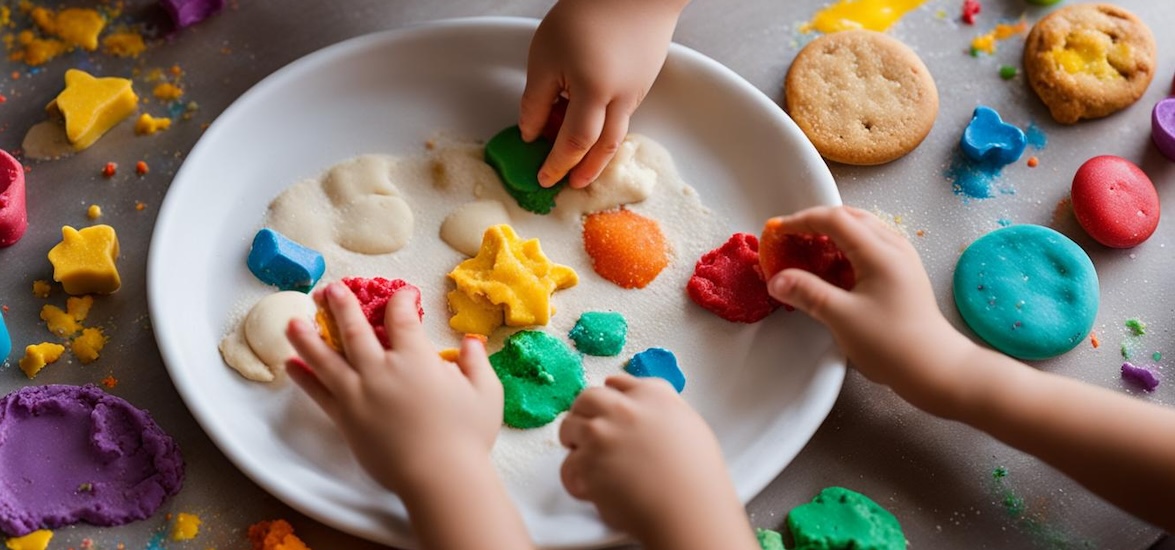

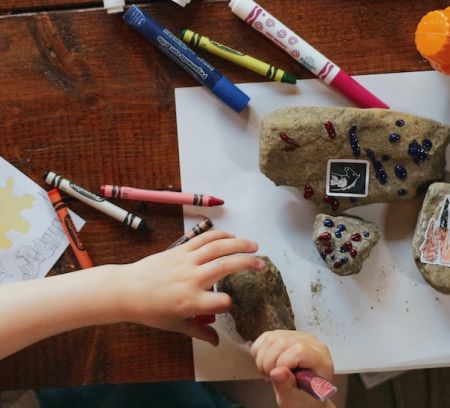

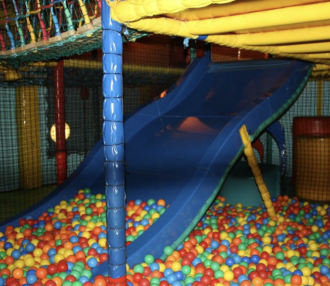


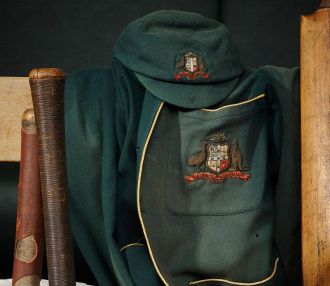
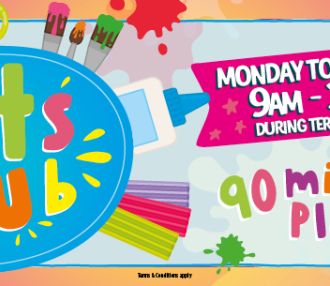





AshleyPugh ;
Ashley Pugh is one of the Co-Founders of Familydaysout.com and has been committed to writing family related content since 2008. There isn't much about family attractions that Ashley doesn't know, after visiting hundreds of them worldwide over the last 20 years.
Leave a comment